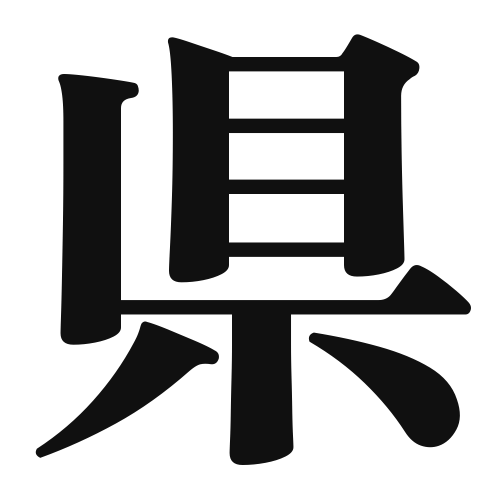1. Overview of Meaning
The kanji “県” (ken) refers to a “prefecture” in Japan, which is an administrative division similar to a state or province in other countries. Japan is divided into 47 prefectures, each with its own local government.
2. Origin and Radicals
Origin of the Kanji: The kanji “県” is a compound character that combines elements of both pictographs and ideographs. It originally depicted a boundary or area, representing a region governed by local authorities.
Radical: The radical for “県” is “阜” (fu), which relates to mounds or hills, indicating a geographical aspect of the prefecture.
3. Examples of Usage
Common Words and Phrases:
- 県庁 (kenchou) – prefectural office
- 県民 (kenmin) – prefectural residents
Example Sentences in Daily Conversation:
- 私は東京県に住んでいます。 (Watashi wa Tōkyō-ken ni sundeimasu.) – I live in Tokyo Prefecture.
- この県は美しい自然があります。 (Kono ken wa utsukushii shizen ga arimasu.) – This prefecture has beautiful nature.
4. Synonyms and Antonyms
Similar Kanji:
- 州 (shuu) – state; refers to larger administrative divisions, often used in the context of countries like the USA.
- 市 (shi) – city; a smaller administrative unit within a prefecture.
Antonyms:
- 無 (mu) – nothing; represents the absence of something, contrasting with the defined boundaries of a prefecture.
5. Cultural and Historical Background
Relation to Japanese Culture: The concept of “県” is deeply rooted in Japan’s administrative history, reflecting the country’s organization and governance. Each prefecture has its own unique culture, traditions, and local specialties.
Proverbs and Idioms:
- 「県を越える」 (ken o koeru) – to cross prefectures; often used to describe traveling or moving beyond one’s local area.
